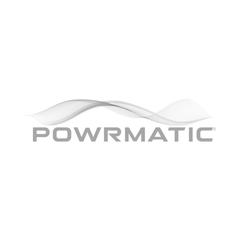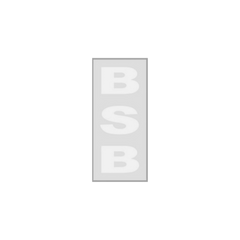Shop All
- From £78.87 excl. VATUnit price excl. VAT /Unavailable
Elta Silent Inline Mixed Flow Circular Fan
From £432.47 excl. VATUnit price excl. VAT /UnavailableElta Inline Mixed Flow Circular Fan
From £131.73 excl. VATUnit price excl. VAT /Unavailable
Brands
Learn more about Inline Circular Fans
General Information
General Information
How Inline Circular Fans Work
An inline circular fan consists of a motor-driven impeller inside a cylindrical casing. When activated, the impeller generates a region of low pressure, drawing air in from one end and discharging it through the other. This streamlined airflow minimises resistance within ducts, maximising efficiency. As the fan is installed within ducting, noise levels are reduced compared with traditional surface-mounted fans.
Benefits of Inline Circular Fans
✔ Space-Saving Design – Fits into ceilings, lofts, and tight spaces where traditional fans would not.
✔ High Airflow Efficiency – Capable of delivering airflow measured in m³/h or l/s, suitable for residential and commercial uses.
✔ Quiet Operation – Duct-mounted positioning reduces noise, making them ideal for schools, offices, and healthcare settings.
✔ Energy Efficiency – Designed with energy-efficient motors in line with UK Ecodesign requirements (EU 327/2011 retained in UK law).
✔ Versatile Applications – Suitable for homes, greenhouses, workshops, data centres, and commercial HVAC systems.
Applications of Inline Circular Fans
• Residential – Removes moisture, odours, and pollutants in kitchens and bathrooms, improving indoor air quality.
• HVAC Systems – Enhances airflow and temperature control in homes, offices, and commercial facilities.
• Greenhouses & Hydroponics – Provides circulation to maintain controlled growing environments.
• Industrial Exhaust – Removes fumes and heat from workshops, factories, and production areas.
• Data Centres – Helps maintain safe operating temperatures for sensitive electronic equipment.
Choosing the Right Inline Circular Fan
When selecting an inline fan, consider the following factors:
• Airflow Requirements – Determine airflow in m³/h or l/s, based on space dimensions and application needs.
• Duct Size – Fan dimensions must match the ductwork system to ensure efficiency.
• Noise Levels – For noise-sensitive areas, select fans designed to meet BS 8233:2014 guidance on acceptable sound levels.
• Energy Efficiency – Choose models that comply with UK Ecodesign regulations to minimise running costs.
• Environmental Suitability – Use ATEX-certified fans (BS EN 14986) in hazardous environments such as chemical or food-processing facilities.
Maintenance Tips for Inline Circular Fans
• Inspect fan and ductwork regularly for dust, loose connections, and signs of wear.
• Clean blades and housing using a soft brush or damp cloth to prevent performance loss.
• Check the motor for abnormal sounds or vibration, which may indicate issues.
• Lubricate bearings if recommended by the manufacturer to maintain smooth operation.
• For LEV systems (under COSHH), ensure testing and inspection at least every 14 months.
Frequently Asked Questions
What advantages do inline circular fans offer over traditional fans?
What advantages do inline circular fans offer over traditional fans?
Inline fans are duct-mounted, saving space and reducing noise compared to surface-mounted fans.
Are inline circular fans suitable for outdoor use?
Are inline circular fans suitable for outdoor use?
Some models are weather-resistant, but always check manufacturer specifications before exterior installation.
Do inline fans meet UK Building Regulations?
Do inline fans meet UK Building Regulations?
Yes, models are available that meet Part F ventilation and Part L efficiency requirements. Always verify airflow performance in m³/h or l/s.
What efficiency standards apply to inline fans in the UK?
What efficiency standards apply to inline fans in the UK?
Fans above 125 W must comply with UK Ecodesign regulations (EU 327/2011 retained in UK law) and carry UKCA marking.
Are inline fans suitable for noise-sensitive environments?
Are inline fans suitable for noise-sensitive environments?
Yes, low-noise models are available. Specifications should align with BS 8233:2014 indoor noise guidelines.
Can inline circular fans be used for Local Exhaust Ventilation (LEV)?
Can inline circular fans be used for Local Exhaust Ventilation (LEV)?
Yes, inline fans are often used in LEV systems. Under COSHH Regulations, LEV systems must be tested at least every 14 months.
What if my project is in a hazardous environment?
What if my project is in a hazardous environment?
For explosive or dust-heavy environments, use an ATEX-rated fan designed in line with BS EN 14986.
Please refer to technical bulletin for more design standards that may be relevant
What documentation should I expect from the supplier?
What documentation should I expect from the supplier?
Operation and Maintenance (O&M) manuals should include airflow/pressure data, electrical ratings, noise levels, UKCA certification, and servicing requirements.
Is installation straightforward?
Is installation straightforward?
Inline fans often feature simple installation kits, but for complex ducted systems or industrial setups, professional installation is recommended.
How often should inline fans be serviced?
How often should inline fans be serviced?
Routine inspection should be carried out at least annually, with more frequent checks in demanding or dusty environments.
Refer to technical bulletin for more info on maintenance standards – some applications require more maintenance to meet higher standards.
















